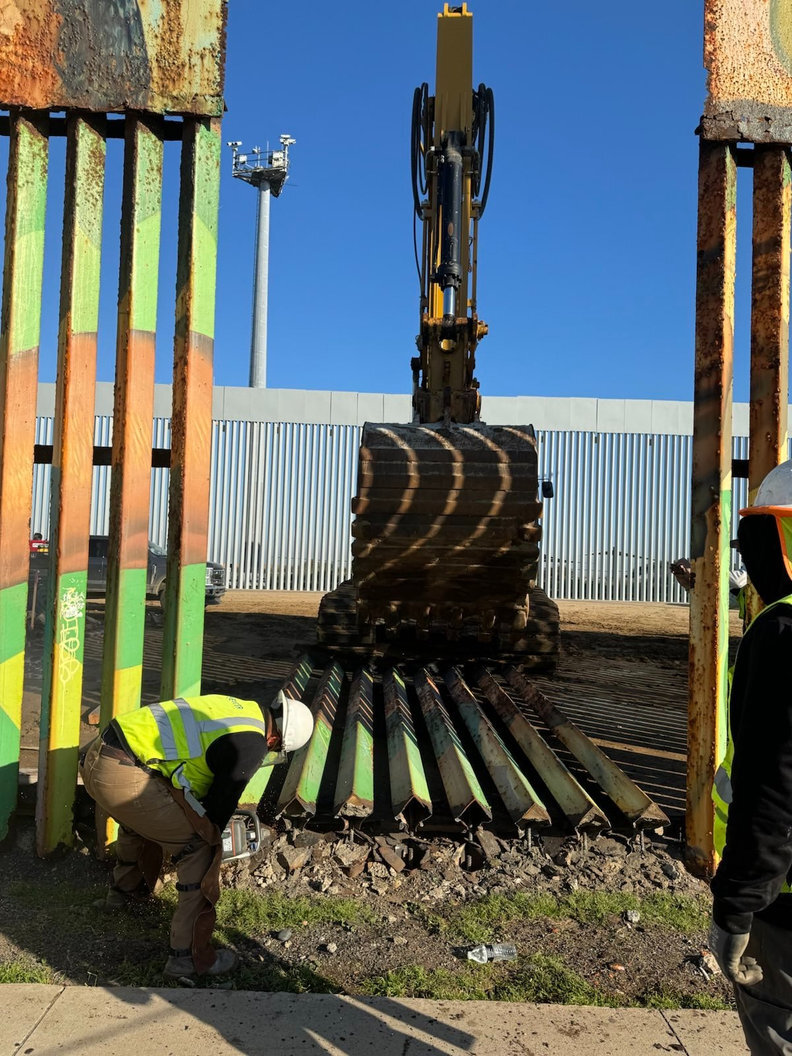1420 Kettner Blvd,
Suite 700
San Diego, CA 92101
(619) 860-2100

Twenty sections of border wall recently dismantled at Friendship Park have been procured by the San Diego-based Museum of Us at the request of the community coalition, the Friends of Friendship Park. These sections of retired border wall – each 18 feet high, eight feet wide, and weighing over 4000 pounds – present a "time capsule" of life at Friendship Park, the iconic cross-border meeting place overlooking the Pacific Ocean. They also offer a unique vantage of the "fronteriza" culture that characterizes the "trinational" region (U.S., Mexico, Kumeyaay Nation) at the western end of the U.S.-Mexico border.
In the coming months, the Friends of Friendship Park will partner with the Museum of Us to facilitate a community-driven process for determining how and where these historically, artistically, and culturally significant artifacts will be re-distributed back into the community for public exhibition. The soon-to-be-announced members of a Community Advisory Council will determine how the former sections of border wall from Friendship Park can help tell stories of humanity that transcend barriers.
"We look forward to deeply listening to and learning from the community of people to whom Friendship Park has meant so much for so long," said Micah Parzen, CEO of the Museum of Us, which is located in San Diego's Balboa Park and widely recognized as a leader in the museum field. While the Museum of Us is open to the possibility of hosting an exhibit, it is committed to following the lead of the Community Advisory Council, which will be convened by the Friends of Friendship Park. "The Museum of Us is honored to have played a role in securing so many sections of the former border wall at Friendship Park from being destroyed. But we know that they belong to our larger community, not to us. We are confident that, wherever they end up being displayed, the Community Advisory Council will make sure to bring the multi-faceted stories that make Friendship Park so meaningful to life," Parzen said.
From the time they were first erected in 2011, the preserved sections were the site of countless peaceful, cross-border encounters, including thousands of reunions of friends and family separated by the border wall. While U.S. authorities prohibited decorating the U.S. side of the border wall at Friendship Park, the Mexican side of the wall became a favorite site of artistic and cultural expression for community members and well-known Mexican artists.
"These sections of wall were a barrier to the landscape, but they also became a canvass where artistic expression, religious and political beliefs, dreams, frustrations, and mixed emotions all became entangled," said the photographer Maria Teresa Fernandez, who has spent decades documenting changes at this iconic site.
Friendship Park is a public park and cross-border meeting place at the western end of the U.S.-Mexico border, on Kumeyaay/Kumiai land and an important site to Kumeyaay/Kumiai Nation. At Friendship Park people from both sides of the border meet up to nurture the land, break bread together, make friends across barriers, and celebrate the culture and heritage of la frontera.
"These sections of border wall will make clear to all who will someday see them that the U.S.-Mexico border is, at its essence, a place of creative human encounter and endeavor, a place of friendship," said John Fanestil, a leader of the Friends of Friendship Park.
The Prebys Foundation has supported the planning phase of this extraordinary community-based collaboration. "The Prebys Foundation is proud to support this project, recognizing the profound impact that these sections of the border wall have had on the community," said Grant Oliphant, CEO of the Prebys Foundation. "Amid division, Friendship Park has fostered a place of understanding, familial connection, and resilience in the face of what otherwise is the difficult shared human experience. We support the community’s ability to preserve these sections because they reflect a nuanced, rich cultural narrative that defines our region. We believe that by giving these artifacts a place of honor, we are helping to maintain a vital dialogue on the themes of friendship, resilience, and our multicultural regional identity.”
_____
View the original post by Friends of Friendship Park here.

